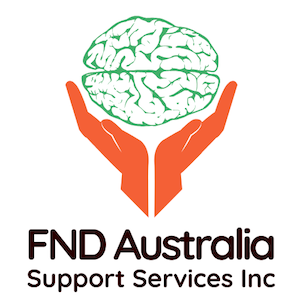Discover options for FND treatment in Australia
People with FND are best treated within a comprehensive multi-disciplinary team involving:
- Neurology
- Neuro-psychiatry
- Physical therapy
- Occupational therapy and,
- Neuro-psychology
When the person presents with difficulties with swallowing and talking, speech therapy will also play an important role in the treatment, and for those with vision difficulties and/or blindness an Optometrist experienced in functional neurological disorders is essential.
When is physical therapy best for FND treatment?
For motor symptoms such as gait disorder, limb weakness and movement disorder, physical therapy should be provided by practitioners experienced and knowledgeable in functional disorders (Jon Stone & Carson, 2015).
Physical therapy for functional disorders has some elements common to rehabilitation for disorders like stroke and MS, but also has many elements that are different. For example, someone with functional leg weakness should be encouraged to think less about their leg when they walk, not more.
When are psychological therapies best for Functional Neurological Disorder treatment?
Psychological therapies have the best evidence for helping people manage seizure-like episodes.
What role does Occupational Therapy play in the treatment for FND?
Occupational Therapy is also important to help the person manage symptoms in their daily life. FND is a disabling illness and many people may need mobility aids to support independence. Physical rehabilitation should always be the first approach. Disability aids such as walkers and wheelchairs may be used when disability is ongoing to provide the person with independence and increase safety.
What is the prognosis for Functional Neurological Disorder?
The prognosis for FND, especially in adults is poor, with long-term follow-up studies identifying that 50–90% of people with FND experience ongoing symptoms (Feinstein, Stergiopoulos, Fine, & Lang, 2001; Jankovic, Vuong, & Thomas, 2006; Thomas, Vuong, & Jankovic, 2006), many of whom become worse, especially when treatment begins later than 6–12 months from symptom onset (Gupta & Lang, 2009). Long term disability is similar to that seen in cohorts of people with MS.

Get your FND questions answered today
References
Feinstein, A., Stergiopoulos, V., Fine, J., & Lang, A. (2001). Psychiatric outcome in patients with a psychogenic movement disorder: a prospective study. Cognitive and Behavioral Neurology, 14(3), 169-176.
Gupta, A., & Lang, A. E. (2009). Psychogenic movement disorders. Current Opinion in Neurology, 22(4), 430-436. doi:10.1097/WCO.0b013e32832dc169
Jankovic, J., Vuong, K., & Thomas, M. (2006). Psychogenic Tremor: Long-Term Outcome. . CNS Spectrums, 11(7), 501-508. doi:doi:10.1017/S1092852900013535
Stone, J., & Carson, A. (2015). Functional neurologic disorders. CONTINUUM: Lifelong Learning in Neurology, 21(3), Behavioral Neurology and Neuropsychiatry, p818-837.
Thomas, M., Vuong, K. D., & Jankovic, J. (2006). Long-term prognosis of patients with psychogenic movement disorders. Parkinsonism Relat Disord, 12(6), 382–387. doi:doi:10.1016/j.parkreldis.2006.03.005
